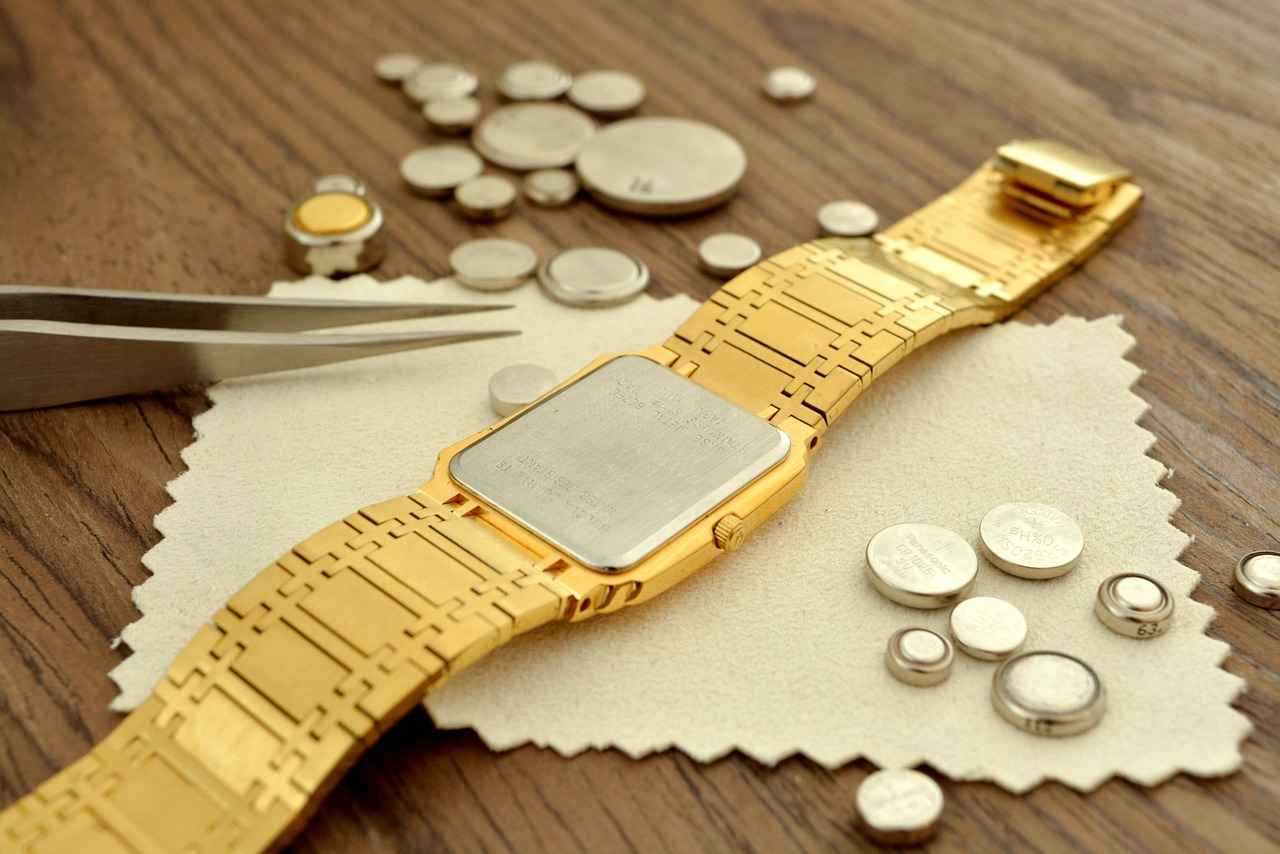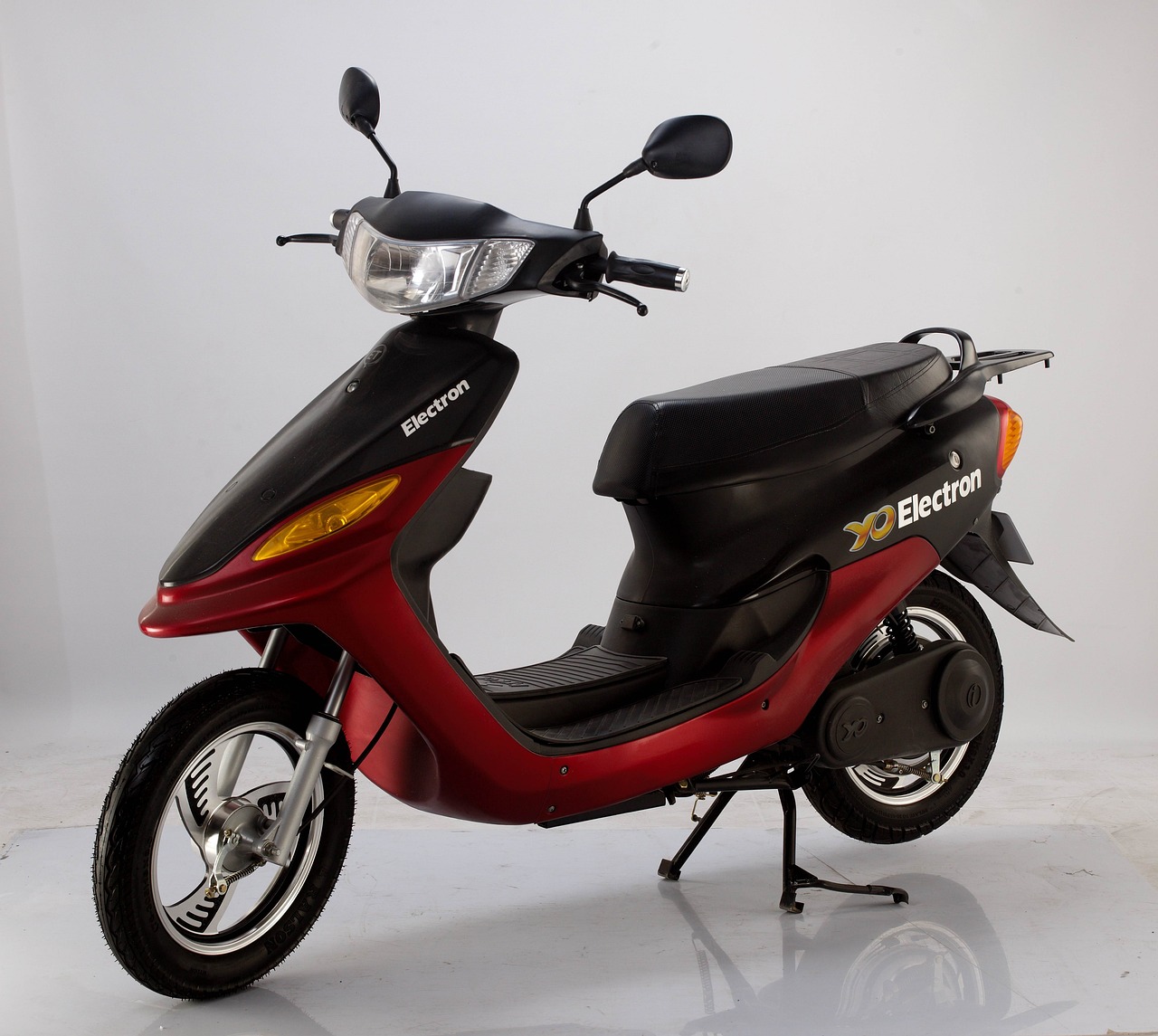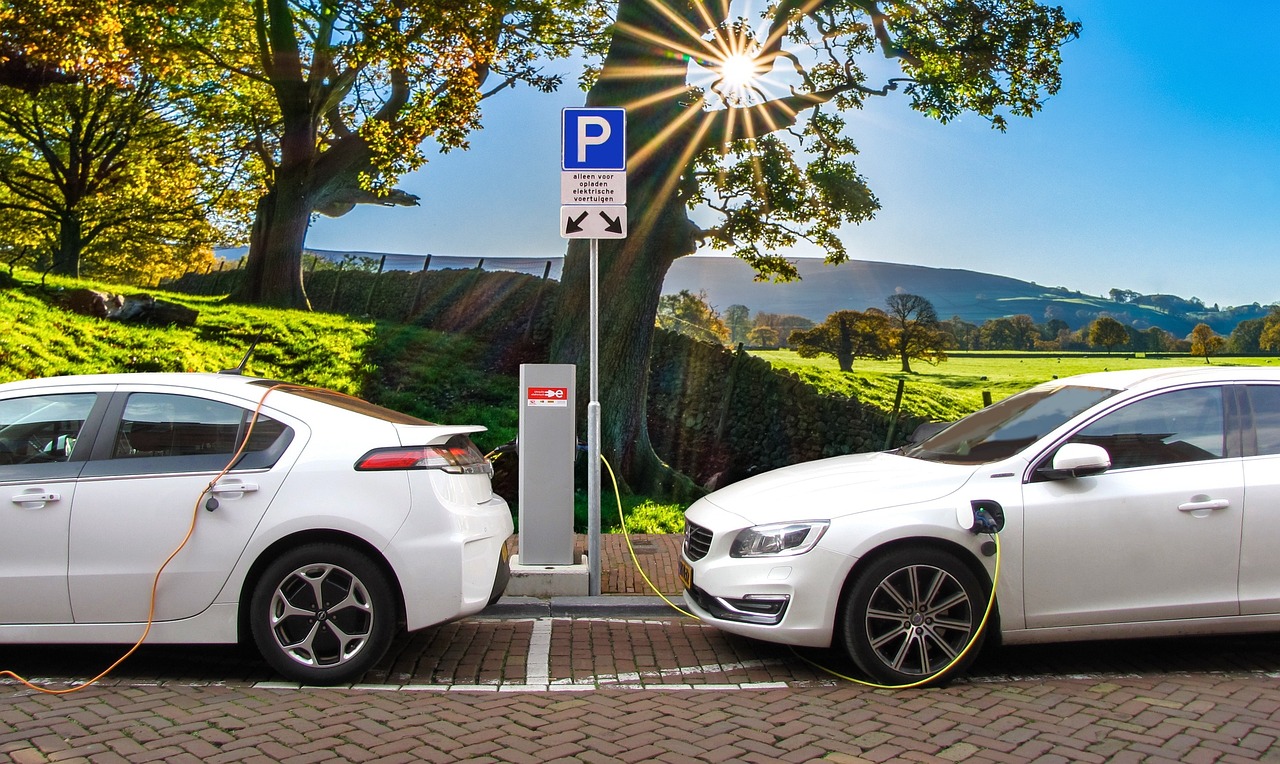This article provides essential tips and insights on maintaining your electric bike’s battery, ensuring longevity and optimal performance for a sustainable riding experience.
Understanding Electric Bike Batteries
Electric bike batteries are crucial components that power your ride. Knowing their types, capacities, and chemistry can help you make informed decisions about maintenance.
Common Types of Electric Bike Batteries
- Lithium-Ion Batteries: The most popular choice for electric bikes due to their lightweight, high capacity, and longer lifespan. Proper care can enhance their performance significantly.
- Lead-Acid Batteries: Less common in modern electric bikes but still used in some models. They require more maintenance and are heavier than lithium-ion batteries.
- Nickel-Cadmium Batteries: Older technology that is rarely used today, but they have unique characteristics that require specific maintenance.
Best Practices for Battery Maintenance
- Regular Cleaning and Inspection: Keeping the battery terminals clean and inspecting for any signs of wear or corrosion can prevent performance issues and ensure safe operation.
- Temperature Considerations: Extreme temperatures can affect battery performance. It’s essential to store your electric bike in a temperature-controlled environment to maintain battery health.
Signs of Battery Wear and Tear
- Decreased Range: A significant drop in your bike’s range may indicate that the battery is losing capacity and may need replacement or servicing.
- Unusual Sounds or Smells: Any unusual sounds or smells coming from the battery can indicate a serious issue. It’s crucial to address these immediately to avoid safety hazards.
When to Replace Your Electric Bike Battery
- Battery Age and Lifespan: Most electric bike batteries have a lifespan of 2-5 years, depending on usage and care. Regular maintenance can help maximize their longevity.
- Performance Degradation: If your battery shows consistent performance issues despite proper care, it may be time to consider a replacement to restore your bike’s functionality.
Conclusion: Maximizing Your Electric Bike’s Battery Life
By following these maintenance tips and understanding your electric bike’s battery, you can ensure a longer lifespan and better performance, making your rides more enjoyable and efficient.

Understanding Electric Bike Batteries
Electric bike batteries are essential components that provide the power necessary for your ride. Understanding the various types of batteries available, their capacities, and the underlying chemistry is crucial for making informed decisions regarding maintenance and performance.
Electric bike batteries primarily fall into three categories: lithium-ion, lead-acid, and nickel-cadmium. Each type has unique characteristics that influence their performance, lifespan, and maintenance requirements.
- Lithium-Ion Batteries: These are the most widely used batteries in modern electric bikes, favored for their lightweight design and high energy density. They typically last longer and require less maintenance than other types.
- Lead-Acid Batteries: While less common today, lead-acid batteries are still found in some models. They are heavier and generally have a shorter lifespan, requiring more frequent maintenance.
- Nickel-Cadmium Batteries: These batteries are less popular due to their memory effect, which can reduce their effective capacity over time. However, they are known for their durability.
When selecting a battery for your electric bike, consider factors such as capacity, which is measured in amp-hours (Ah), and voltage, which impacts the overall power output. A higher capacity allows for longer rides between charges, while the voltage influences the bike’s speed and performance.
In addition to understanding the types of batteries, it is essential to be aware of their chemistry. Lithium-ion batteries, for example, are made up of various materials that can affect their charging cycles and overall lifespan. Proper care and maintenance can significantly enhance their performance and longevity.
By familiarizing yourself with these aspects of electric bike batteries, you can make better decisions regarding their maintenance, ultimately leading to a more enjoyable and efficient riding experience.

Common Types of Electric Bike Batteries
Electric bikes have gained immense popularity due to their eco-friendliness and efficiency. A critical component of these bikes is the battery, which provides the necessary power for the ride. Understanding the different types of batteries and their unique characteristics is essential for proper maintenance and optimal performance.
- Lithium-Ion Batteries: This is the most commonly used battery type in electric bikes. Known for their lightweight design, these batteries offer a high energy density, allowing for longer rides without frequent recharges. They have a lifespan of around 2 to 5 years, depending on usage and care.
- Lead-Acid Batteries: While less common in modern electric bikes, lead-acid batteries are still used in some older models. They are heavier and require more maintenance compared to lithium-ion batteries. Their lifespan is typically shorter, making them less desirable for long-term use.
- Nickel-Cadmium Batteries: These batteries were once popular but have fallen out of favor due to their memory effect, which can reduce their capacity over time. They are heavier and less efficient than lithium-ion batteries, making them a less attractive option for electric bike manufacturers.
Each battery type has its own maintenance needs and characteristics. For instance, lithium-ion batteries require careful charging practices to avoid overcharging, while lead-acid batteries need regular checks to maintain their health. Understanding these differences can help you make informed decisions about which battery to choose and how to care for it.
In conclusion, selecting the right battery type for your electric bike is crucial for maximizing performance and longevity. By familiarizing yourself with the characteristics of each battery type, you can ensure a more enjoyable and efficient riding experience.
Lithium-Ion Batteries
have become the preferred choice for powering electric bikes, and for good reason. Their lightweight design, high energy capacity, and extended lifespan make them an ideal option for cyclists seeking efficiency and performance. Understanding how to maintain these batteries is crucial for maximizing their potential and ensuring a sustainable riding experience.
These batteries utilize advanced lithium-ion technology, which allows them to store more energy in a smaller space compared to other battery types. This characteristic is particularly advantageous for electric bikes, as it contributes to a lighter overall weight, enhancing the bike’s performance and maneuverability.
To ensure your lithium-ion battery remains in optimal condition, here are some essential maintenance tips:
- Avoid Overcharging: Always use the recommended charger and avoid leaving the battery plugged in for extended periods after it reaches full charge.
- Optimal Charge Levels: Aim to keep the battery charged between 20% and 80% to prolong its lifespan.
- Temperature Control: Store the battery in a cool, dry place, as extreme temperatures can negatively impact performance.
- Regular Inspections: Check for any signs of wear, corrosion, or damage. Keeping terminals clean can prevent performance issues.
Additionally, when it comes to storage, it’s advisable to keep the battery at around 50% charge if you plan to store it for an extended period. This practice helps mitigate the risk of degradation and ensures the battery remains functional when needed.
In conclusion, by implementing these maintenance strategies, you can significantly enhance the performance and longevity of your electric bike’s lithium-ion battery. This not only saves you money on replacements but also contributes to a more enjoyable and efficient riding experience.
Charging Tips for Lithium-Ion Batteries
To ensure the longevity and optimal performance of your electric bike’s lithium-ion battery, it is crucial to adopt effective charging practices. These batteries are known for their efficiency and lightweight design, but they do require specific care to maximize their lifespan.
- Avoid Overcharging: Continuously charging your battery beyond its full capacity can lead to overheating and reduced lifespan. Always unplug the charger once the battery reaches 100%.
- Prevent Deep Discharging: Letting your battery drain completely can cause irreversible damage. Aim to recharge your battery when it reaches around 20% to maintain its health.
- Optimal Charging Range: For the best results, keep your battery charged between 20% and 80%. This range helps in preserving the battery’s capacity and extending its overall life.
- Use the Right Charger: Always use the charger that came with your electric bike or a manufacturer-approved alternative. Using an incompatible charger can lead to performance issues.
- Charge in a Suitable Environment: Avoid charging your battery in extreme temperatures. A cool, dry location is ideal for preventing overheating and maintaining battery integrity.
By following these charging tips, you can significantly enhance the performance and lifespan of your electric bike’s lithium-ion battery. Regular monitoring and proper care can lead to a more enjoyable and sustainable riding experience.
Storage Recommendations for Lithium-Ion Batteries
When it comes to storing lithium-ion batteries for extended periods, following specific guidelines is crucial to ensure their longevity and performance. These batteries are commonly used in various devices, including electric bikes, smartphones, and laptops, making proper storage essential.
1. Ideal Storage Environment
- Store batteries in a cool and dry place, away from direct sunlight and moisture.
- A temperature range of 15°C to 25°C (59°F to 77°F) is optimal for battery health.
2. Charge Level Before Storage
- Ensure the battery is charged to approximately 50% before storing it. This helps in preventing deep discharge, which can lead to irreversible damage.
- A fully charged battery can experience stress and degrade faster, while a completely depleted one may not hold a charge when needed.
3. Avoid Extreme Conditions
- Avoid storing batteries in environments with extreme temperatures, such as garages or attics, where heat can be excessive.
- Humidity can also affect battery performance; therefore, a dehumidified space is ideal.
4. Regular Checks
- Periodically check the battery’s charge level during storage. If it drops below 40%, recharge it to maintain optimal health.
- Inspect for any signs of swelling, leakage, or corrosion, which can indicate a need for immediate disposal.
By following these storage recommendations, you can significantly enhance the lifespan and efficiency of your lithium-ion batteries, ensuring they perform well when needed the most.
Lead-Acid Batteries
have been a traditional choice for various applications, including electric bikes, though their prevalence has diminished with the rise of more advanced battery technologies. While these batteries are still found in some models, understanding their characteristics is crucial for users looking to optimize their electric bike experience.
Lead-acid batteries are known for their robustness and affordability. However, they come with certain drawbacks that potential buyers should consider. These batteries are generally heavier than their lithium-ion counterparts, which can affect the overall weight and handling of the bike.
One of the main challenges with lead-acid batteries is their maintenance requirements. Unlike lithium-ion batteries, which are relatively low-maintenance, lead-acid batteries require regular checks to ensure optimal performance. This includes:
- Regularly checking fluid levels
- Cleaning terminals to prevent corrosion
- Ensuring proper charging practices to avoid sulfation
Charging lead-acid batteries requires careful attention. Overcharging can lead to reduced lifespan and efficiency. It is recommended to use a charger specifically designed for lead-acid batteries to avoid these issues. Typically, these batteries have a lifespan of around 3-5 years, depending on usage and maintenance.
The additional weight of lead-acid batteries can impact the performance of electric bikes. Riders may notice a decrease in speed and agility compared to bikes equipped with lighter lithium-ion batteries. Therefore, when selecting an electric bike, it’s essential to weigh the pros and cons of battery types based on personal riding needs.
While lead-acid batteries are less common in modern electric bikes, they still serve a purpose in specific models. Understanding their maintenance needs and performance implications can help riders make informed decisions. As technology advances, the trend will likely continue to favor lighter and more efficient battery technologies, but lead-acid batteries remain a viable option for certain users.

Best Practices for Battery Maintenance
Implementing best practices for battery maintenance is essential for extending the life of your electric bike’s battery. By following a few simple yet effective guidelines, you can ensure that your battery remains in optimal condition, providing you with reliable performance for years to come. Regular checks and careful handling are key components of a successful maintenance routine.
- Regular Inspections: Conduct routine checks on your battery to identify any potential issues early. Look for signs of wear, corrosion, or damage to the terminals.
- Proper Cleaning: Keep the battery terminals clean to ensure good electrical contact. Use a soft cloth and a mild cleaning solution to remove any dirt or grime.
- Optimal Charging Practices: Avoid overcharging your battery. It’s best to keep the charge level between 20% and 80% to prolong its lifespan. Use a smart charger that automatically cuts off when the battery is fully charged.
- Temperature Control: Store your electric bike in a cool, dry place. Extreme temperatures can negatively impact battery performance and longevity. Aim for a storage temperature between 50°F and 77°F.
- Periodic Cycling: Regularly cycle your battery by fully charging and discharging it every few months. This helps to recalibrate the battery management system and maintain capacity.
By adhering to these best practices, you can significantly enhance the durability and efficiency of your electric bike’s battery. Remember, a well-maintained battery not only contributes to a smoother ride but also ensures your bike is ready for any adventure.
Conclusion: Consistent maintenance is crucial for maximizing the lifespan of your electric bike’s battery. By implementing these best practices, you can enjoy a more sustainable and efficient riding experience.
Regular Cleaning and Inspection
of your electric bike’s battery is essential for maintaining its performance and safety. Neglecting this aspect can lead to serious issues that may compromise your riding experience.
To begin with, keeping the battery terminals clean is crucial. Dust, dirt, and moisture can accumulate over time, leading to poor connections and reduced efficiency. Use a soft, dry cloth or a specialized battery cleaning brush to gently remove any debris. Avoid using water or harsh chemicals, as these can damage the battery.
In addition to cleaning, it is vital to inspect the battery regularly for signs of wear or corrosion. Look for:
- Corrosion: This appears as a white, powdery substance around the terminals. If you notice this, it’s essential to clean it off immediately to prevent further damage.
- Cracks or Leaks: Inspect the casing for any visible cracks or signs of leaking. Any damage to the battery casing can lead to performance issues and safety hazards.
- Loose Connections: Ensure that all connections are secure. Loose terminals can lead to intermittent power loss or complete failure.
By conducting these regular checks, you can prevent performance issues and ensure safe operation of your electric bike. If you encounter any significant issues during your inspection, it is advisable to consult a professional for further evaluation and repair.
In conclusion, maintaining clean and well-inspected battery terminals is a simple yet effective way to enhance the longevity and functionality of your electric bike’s battery. This proactive approach not only saves you from unexpected breakdowns but also contributes to a safer and more enjoyable riding experience.
Temperature Considerations
play a crucial role in the performance and longevity of your electric bike’s battery. Understanding how extreme temperatures can impact battery health is essential for any electric bike owner.
Battery performance can significantly diminish when exposed to high or low temperatures. For instance, in extreme heat, battery cells may overheat, leading to reduced capacity and potential damage. Conversely, cold temperatures can cause the battery to struggle, resulting in a noticeable decrease in range and efficiency.
To ensure your electric bike battery remains in optimal condition, consider the following guidelines:
- Store in a Controlled Environment: Keep your electric bike in a temperature-controlled setting, ideally between 32°F (0°C) and 77°F (25°C). This range is optimal for lithium-ion batteries, which are commonly used in electric bikes.
- Avoid Direct Sunlight: Parking your bike in direct sunlight can raise the battery temperature excessively. Always seek shaded or indoor storage.
- Precondition Your Battery: If you plan to ride in extreme temperatures, allow your battery to adjust to the ambient temperature before use. This can help prevent sudden performance drops.
- Monitor Battery Health: Regularly check your battery’s performance metrics. If you notice a significant drop in range or capacity, it may be time for maintenance or replacement.
In addition to these tips, it’s important to remember that battery health can be affected by charging practices. Avoid charging your battery in extreme temperatures, as this can lead to further degradation.
By taking these precautions, you can maintain your electric bike’s battery health and ensure a smooth and enjoyable riding experience, regardless of the weather conditions.

Signs of Battery Wear and Tear
Understanding the signs of battery wear is essential for electric bike owners. Recognizing these indicators allows you to take timely action, preventing unexpected breakdowns and ensuring your bike remains reliable and safe to ride.
| Indicator | Description | Action Required |
|---|---|---|
| Decreased Range | If your bike’s range has significantly dropped, it may signal that the battery is losing its capacity. | Consider testing the battery health or replacing it if the issue persists. |
| Unusual Sounds | Any strange noises coming from the battery could indicate internal damage or malfunction. | Stop using the bike immediately and have the battery inspected by a professional. |
| Swelling or Distortion | Physical changes such as swelling can indicate a serious problem that could lead to leakage or fire. | Replace the battery immediately and dispose of it properly. |
| Overheating | Excessive heat during charging or use may suggest a malfunction. | Disconnect the battery and allow it to cool before further inspection. |
By keeping an eye out for these signs, you can ensure that your electric bike’s battery remains in good condition. Regular maintenance and timely interventions can save you from costly repairs and enhance your riding experience.
In conclusion, being aware of the indicators of battery wear is crucial for maintaining the performance and safety of your electric bike. Stay proactive, and your rides will be more enjoyable and trouble-free.
Decreased Range
If you experience a noticeable decrease in the range of your electric bike, it could be a strong indicator that the battery is losing its capacity. This decline in performance may necessitate either a replacement or servicing to restore the bike’s functionality. Understanding the implications of a reduced range is essential for maintaining your electric bike’s overall performance.
Electric bike batteries are designed to provide a specific range based on their charge and the bike’s energy consumption. When you notice that you are unable to travel as far on a single charge as you once could, it is crucial to investigate further. A drop in range can stem from several factors, including:
- Battery Age: Over time, batteries naturally degrade. Most electric bike batteries last between 2 to 5 years, depending on usage and care.
- Charging Habits: Incorrect charging practices, such as frequent deep discharges or overcharging, can accelerate battery wear.
- Temperature Effects: Extreme heat or cold can impact battery efficiency and lifespan, leading to reduced range.
- Mechanical Issues: Sometimes, the problem may not be the battery itself but mechanical issues such as tire pressure or drivetrain problems that can affect overall performance.
To address a decreased range, consider the following steps:
- Check Battery Health: Use a battery management system or consult a professional to assess the battery’s condition.
- Inspect Charging Practices: Ensure you are following best practices for charging your battery to prolong its life.
- Evaluate Riding Conditions: Analyze your riding habits and conditions, as these can significantly affect range.
In conclusion, a decreased range can serve as a warning sign that your electric bike’s battery may need attention. By staying vigilant and addressing potential issues promptly, you can enhance your riding experience and ensure your electric bike remains a reliable mode of transportation.
Unusual Sounds or Smells
from your electric bike’s battery can be alarming and should never be ignored. These signs often indicate underlying issues that could pose serious safety risks. Understanding what these signs mean and how to respond is crucial for every electric bike owner.
When you detect any unusual sounds, such as hissing, popping, or crackling noises, it may suggest that the battery is experiencing a malfunction. These sounds can be caused by gas buildup, which might occur if the battery is overcharged or damaged. Similarly, if you notice any unpleasant smells, such as a burning or chemical odor, it may indicate overheating or electrolyte leakage. Both situations can lead to battery failure or, in extreme cases, fires.
Immediate action is essential when faced with these symptoms. Here are some steps you should take:
- Stop Using the Bike: If you hear unusual sounds or smell something odd, cease using the bike immediately to prevent potential hazards.
- Inspect the Battery: Carefully examine the battery for any visible signs of damage, such as swelling, cracks, or leaks.
- Consult a Professional: If you’re unsure about the condition of your battery, seek assistance from a qualified technician who can perform a thorough inspection.
By being vigilant and proactive, you can significantly reduce the risk of accidents related to battery malfunctions. Regular maintenance and awareness of your battery’s condition will help ensure a safe and enjoyable riding experience.
In conclusion, any from your electric bike’s battery should be treated as serious warning signs. Addressing these issues promptly not only enhances your safety but also extends the life of your battery, allowing you to enjoy your electric bike for years to come.

When to Replace Your Electric Bike Battery
Knowing when to replace your electric bike battery is crucial for maintaining optimal performance and ensuring a smooth riding experience. Several factors play a significant role in determining the right time for a battery replacement. Understanding these factors can help you make informed decisions that enhance your bike’s longevity and functionality.
- Battery Age: Most electric bike batteries have a lifespan ranging from 2 to 5 years, depending on usage, maintenance, and battery type. Regularly check the age of your battery to gauge its performance potential.
- Usage Patterns: The frequency and intensity of your rides directly impact battery health. If you frequently use your bike for long distances or steep inclines, your battery may degrade faster.
- Performance Indicators: Keep an eye out for signs that your battery may need replacing. Common indicators include:
- Decreased Range: If you notice a significant drop in range, it may suggest that the battery is losing its ability to hold a charge.
- Charging Issues: Difficulty in charging or the battery not reaching full capacity can signal that it is nearing the end of its lifespan.
- Physical Damage: Inspect the battery regularly for any signs of physical damage, such as swelling or corrosion, which can indicate the need for immediate replacement.
In conclusion, maintaining awareness of your electric bike battery’s age, usage, and performance indicators is essential for ensuring that you replace it at the right time. This proactive approach not only enhances your riding experience but also contributes to the overall efficiency of your electric bike.
Battery Age and Lifespan
Understanding the age and lifespan of your electric bike’s battery is crucial for ensuring optimal performance and longevity. Most electric bike batteries typically last between 2 to 5 years, but this lifespan can vary significantly based on factors such as usage patterns, environmental conditions, and maintenance practices.
Factors Affecting Battery Lifespan
- Usage Frequency: Regular use can lead to quicker wear and tear, whereas infrequent use may help preserve battery life.
- Charging Habits: Consistently charging the battery to full capacity and then allowing it to drain completely can shorten its lifespan. Aim for a charge level between 20% and 80% for optimal health.
- Temperature Conditions: Batteries perform best in moderate temperatures. Extreme heat or cold can negatively impact their lifespan.
Importance of Regular Maintenance
To maximize the lifespan of your electric bike’s battery, regular maintenance is essential. This includes:
- Regular Inspections: Check for signs of wear, corrosion, or damage to the battery terminals.
- Cleaning: Keep the battery and its connections clean to ensure optimal performance.
- Proper Storage: If you need to store your bike for an extended period, ensure the battery is charged to about 50% and kept in a cool, dry place.
Conclusion
By understanding the factors that influence battery age and lifespan, as well as implementing best practices for maintenance, you can significantly enhance the longevity of your electric bike’s battery. This proactive approach not only ensures a reliable riding experience but also contributes to a more sustainable use of your electric bike.
Performance Degradation
is a critical aspect to consider when maintaining your electric bike’s battery. Understanding the signs that indicate a decline in battery performance can save you from unexpected inconveniences and ensure a smooth riding experience.
As electric bike technology evolves, batteries have become more efficient, but they still face challenges over time. If you notice a consistent decline in your bike’s performance, it might be a sign that the battery is nearing the end of its lifespan.
- Reduced Range: One of the first indicators of performance degradation is a noticeable decrease in the distance you can travel on a single charge. If your bike used to cover 40 miles but now only manages 25, it’s time to evaluate your battery’s health.
- Longer Charging Times: If you find that your battery takes significantly longer to charge than it used to, this could indicate that the battery cells are aging and not holding a charge effectively.
- Inconsistent Power Delivery: Experiencing fluctuations in power while riding can be frustrating. If your bike seems to struggle on inclines or loses power intermittently, it may be time to consider a replacement.
- Physical Signs of Damage: Always inspect your battery for any physical damage, such as swelling or leaks. These signs are clear indicators that the battery is failing and should be replaced immediately for safety reasons.
It’s essential to monitor these performance indicators regularly. If your battery exhibits these symptoms, despite following proper care and maintenance guidelines, it may be time to explore replacement options. Upgrading to a new battery can restore your bike’s functionality and enhance your riding experience.
In conclusion, being proactive about battery health can extend the life of your electric bike and ensure that you enjoy every ride. Regular checks and being aware of performance degradation signs will help you make informed decisions about maintenance and replacements.

Conclusion: Maximizing Your Electric Bike’s Battery Life
Maintaining your electric bike’s battery is essential for ensuring not only its longevity but also its performance. By adhering to effective maintenance tips and having a solid understanding of your battery’s requirements, you can significantly enhance your riding experience. This article outlines key strategies that will help you keep your electric bike battery in top condition, allowing for longer rides and improved efficiency.
First and foremost, it is crucial to understand the type of battery your electric bike uses. Most modern electric bikes utilize lithium-ion batteries, known for their lightweight and high energy density. Familiarizing yourself with the specific needs of your battery type can lead to better care practices. For instance, lithium-ion batteries thrive when kept between 20% and 80% charge. Avoiding extremes in charging can prevent premature wear and tear.
Additionally, proper storage is vital. If you plan to store your electric bike for an extended period, ensure that the battery is charged to around 50% and kept in a cool, dry environment. This practice helps mitigate the risk of damage and prolongs battery life.
Regular maintenance checks are another essential aspect of battery care. Inspecting the battery for any signs of corrosion or wear can help you catch potential issues before they escalate. Keeping the terminals clean and ensuring connections are secure will also enhance performance.
Furthermore, it is important to be aware of temperature effects on battery performance. Extreme heat or cold can adversely affect battery efficiency. Therefore, aim to store your electric bike in a temperature-controlled space whenever possible.
In conclusion, by implementing these maintenance tips and gaining a thorough understanding of your electric bike’s battery, you can significantly extend its lifespan and improve its performance. This proactive approach not only leads to more enjoyable rides but also enhances the overall efficiency of your electric bike.
Frequently Asked Questions
- How can I extend the life of my electric bike battery?
To extend your battery’s life, keep it charged between 20% and 80%, avoid extreme temperatures, and perform regular cleaning and inspections. It’s like giving your battery the TLC it deserves!
- What are the signs that my electric bike battery needs to be replaced?
If you notice a significant drop in range, unusual sounds, or smells from the battery, it’s time to take action. Think of these signs as your battery’s way of saying, “Help me out here!”
- Is it safe to store my electric bike battery for long periods?
Absolutely! Just make sure to store it in a cool, dry place and keep it charged to about 50%. This way, your battery will be ready to roll when you are!
- What type of battery is best for my electric bike?
Lithium-ion batteries are generally the best choice due to their lightweight and long lifespan. They’re like the superheroes of electric bike batteries!
- How often should I charge my electric bike battery?
Charge it regularly, but avoid overcharging. A good rule of thumb is to charge it after every ride, especially if you’ve used a significant portion of the battery. This keeps it in tip-top shape!












